End Of The Shuttle Program, Advances In Commercial Space
Efforts Highlight The Year
This year saw the beginning of the passing of the low-orbit
manned space program baton from NASA to commercial space
companies ... though not everyone thought that was such a
great idea.

The venerable space shuttle saw its final flight, and there were
many advancements towards the eventual replacement of that
transportation system with one run by for-profit companies. In the
meantime, NASA continued its research into launch systems and crew
modules for future deep-space missions, leaving the Russian Soyuz
system as the only means of transport between Earth and the ISS.
The failure of two unmanned Soyuz missions this year may serve as a
catalyst for pushing other efforts forward, but that remains to be
seen. Here are the highlights of the year in Aerospace for 2011
January
In support of its mission to broaden public awareness of the
benefits of space exploration, the Aerospace Research &
Engineering Systems Institute, Inc. is giving the public the
opportunity to take the
ride of a lifetime to the edge of space. This
event is designed to give the opportunity for a member of the
public to fly aboard a commercial spacecraft who otherwise wouldn't
have the opportunity by raising funds to cover the cost of the
flight.
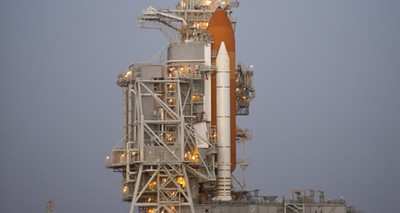
NASA managers were evaluating potential launch dates for space
shuttle Discovery in late February and working to see if
International Space Station on orbit operations would allow a
launch as
early as Feb. 24.
Commercial spaceflight company Space Adventures said it
concluded an agreement with the Federal Space Agency of the Russian
Federation (FSA) and Rocket Space Corporation Energia (RSC Energia)
to
commercially offer three seats on the Soyuz
spacecraft bound for the International Space Station (ISS),
beginning in 2013.
An invitation-only, two-day forum, which featured more than 60
of the world's top aerospace experts, was held in Boulder, CO.
The first "Commercial Human Spaceflight Technical
Forum" was hosted by Special Aerospace Services, a
woman-owned aerospace company committed to developing and providing
innovative aerospace solutions to the aerospace industry, U.S.
government agencies, Department of Defense, and the emerging
commercial spaceflight sector.
February
Numerous reports indicated that both Russia and China are
working on
autonomous spacecraft similar to the X-B
launched and recovered by the U.S. Air Force last year. The blog
Defense Talk and the Canadian Press report that Russia's Space
Minister Oleg Stank has been quoted in Russian news agencies as
saying they have a spacecraft similar to the X-B in development,
but that the work is preliminary.
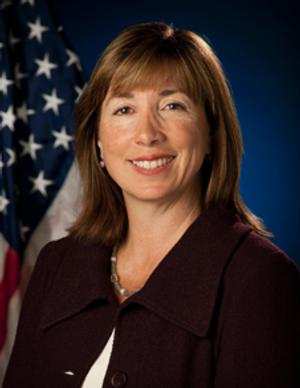
NASA Deputy Administrator Lori Garver (pictured) traveled to Las
Vegas and Boulder, CO, to meet with leaders of two commercial space
companies, Bigelow Aerospace and Sierra Nevada Corp., and tour
their facilities. NASA is
partnering with the commercial sector to
develop innovative technologies to ensure that the U.S. remains
competitive in future space endeavors.
The International Space Station partner agencies met by
videoconference to discuss
coordinating the increased use of the space
station as a research laboratory. The agencies want to
continue using the station as a test-bed for exploration and find
innovative ways to reduce costs while increasing use.
A Pittsburgh-based company which is building a lunar rover has
purchased a slot to travel to the moon from
SpaceX, and could undertake the mission as early as 2013.
Astrobotic Technology, which was spun off from Carnegie Mellon
University, is a contestant for the Google Lunar X Prize.
The
first Orion crew module spacecraft structure
was shipped out from NASA's Michoud Assembly Facility in New
Orleans, LA, on its way to Lockheed Martin's Denver, CO.
facilities. There, it will undergo a series of rigorous tests to
confirm Orion's ability to safely fly astronauts through all the
harsh environments of deep space exploration missions.

NASA
requested $18.7 billion for fiscal year 2012
in a budget the agency says supports a reinvigorated path of
innovation, technological development and scientific discovery. The
budget supports all elements of NASA's 2010 Authorization Act,
which was passed by a strong bipartisan majority of Congress and
signed into law by President Obama.
Space Operations announced plans to
build a two-seat manned orbital spacecraft for
commercial and government use. The company plans a test launch on
February 20, 2012, with a regular flight schedule beginning in late
2012 or early 2013. The Eclipse spacecraft will utilize the highly
successful legacy Gemini technology that was developed by NASA to
allow SOI to bring this product to market in a very short time
frame.
Space shuttle Discovery soared into orbit
on its final mission. The launch came after a
last-minute technical glitch with the Air Force's Eastern Range
that left only four seconds in the launch window and a practical
limit of two seconds because of draining requirements with the
external fuel tank.
In a first for the reusable suborbital launch vehicle industry,
XCOR Aerospace said that the Southwest Research Institute (SwRI), a
commercial entity, has
purchased six suborbital flights to carry SwRI
experiments and payload specialists. This is the first such
contract SwRI has issued.
March
In a speech to the Next-Generation Suborbital Researchers
Conference, Dr. George C. Nield, the FAA Associate Administrator
For Commercial Space Transportation, said there needs to be an
honest assessment about the
risk involved in commercial spaceflight. But
he added that should not deter private companies from moving
forward in their efforts.
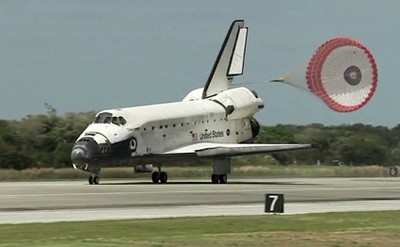
Discovery
landed for the final time at NASA’s
Kennedy Space Center after 202 orbits around Earth and a journey of
5,304,140 miles on STS-133. Discovery’s main gear touched
down at 1157 EST. At wheels stop, the mission elapsed time was 12
days, 19 hours, four minutes and 50 seconds.
Space Exploration Technologies (SpaceX) and the City of
McGregor, TX, today signed a lease agreement allowing SpaceX to
expand the size of its rocket development
facility. Under the deal, SpaceX will lease 631 acres
for its test facility. The new lease will more than double the size
of the current 256 acre site on the Western edge of the City of
McGregor, and will last roughly 10 years
A report by the Roscosmos Technical Management on Human Space
System Flight Testing mentioned an "in compliance in operation" of
the Kvant-V equipment in Soyuz TMA-21 detected during the current
launch preparations at Baikonur. The agency announced that due to
the problem, and the necessity to run additional analysis, it was
delaying the launch of Soyuz TMA-21.
NASA ushered in a "new era of space exploration" at its Wallops
Flight Facility in Virginia with a ribbon cutting ceremony opening
the
new Horizontal Integration Facility (HIF). The
HIF will support medium-class mission capabilities. The first
customer to use the facility will be Orbital Sciences Corp. of
Dulles, VA, with its Taurus II launch vehicle.
April
Elon Musk, CEO and chief rocket designer of Space Exploration
Technologies (SpaceX) unveiled the
final specifications and launch date for the
Falcon Heavy, what will be the world's largest rocket. "First
launch from our Cape Canaveral launch complex is planned for late
2013 or 2014."
Johnson Space Center's Engineering Directorate got testing
underway
on its prototype lander as part of Project Morpheus- a
vertical test bed designed to integrate technologies that could be
used to build future spacecraft intended to land on the moon, Mars,
asteroids or any other foreign surface. The last time a prototype
spacecraft was flown at Johnson, man hadn't yet landed on the
moon.
After 30 years of spaceflight, more than 130 missions, and
numerous science and technology firsts, NASA's space shuttle fleet
will retire and be on display at institutions across the
country to inspire the next generation of explorers
and engineers. NASA Administrator Charles Bolden on Tuesday
announced the facilities where four shuttle orbiters will be
displayed permanently at the conclusion of the Space Shuttle
Program. Facilities in Florida, California, Washington, DC, And New
York City will display the spacecraft.
NASA awarded four Space Act Agreements in the second round of
the agency's Commercial Crew Development (CCDev2) effort. Each
company will
receive between $22 million and $92.3 million
to advance commercial crew space transportation system concepts and
mature the design and development of elements of their systems,
such as launch vehicles and spacecraft.
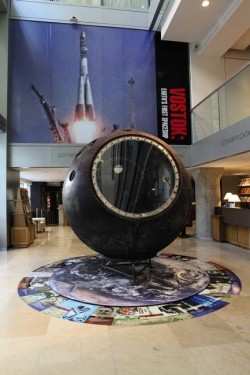
Fifty years after Soviet cosmonaut Yuri Gagarin became the first
man to travel into outer space, the Vostok 3KA-2 Space Capsule that
paved the way for his historic mission sold for $2,882,500 to
Evgeny Yurchenko, chairman of the investment fund AS Popov. Mr.
Yurchenko purchased the icon of space history during an auction at
Southeby's with the
intention of returning it Russia.
A high-ranking Russian space official says Russia
will not permit SpaceX's Dragon spacecraft to dock with the
ISS until its "safety is fully tested." The remarks
were published by the Russian news agency RIA Novosti, as well as
the Roscosmos English-language website.
The Multilateral Coordination Board (MCB) for the International
Space Station partner agencies met Wednesday, April 27, to discuss
increased efforts to
use the station as a test-bed for exploration.
The MCB also congratulated the European Space Agency (ESA) on its
recent decision to continue station operations to at least
2020.
May
In the skies above Mojave Air and Spaceport CA, SpaceShipTwo
demonstrated its
unique reentry ‘feather’
configuration for the first time. This test flight,
the third in less than two weeks, marks another major milestone on
the path to powered test flights and commercial operations.
NASA Administrator Charles Bolden issued a statement about
the
50th anniversary of United States human
spaceflight. On that date in 1961, Alan Shepard became
the first American to fly in space, which Bolden says set our
nation on a path of exploration and discovery that continues to
this day.
The official ceremony marking ESA's
handover of the Soyuz launch site to
Arianespace took place at Europe's Spaceport in French
Guiana, after the site was declared ready for the first flight and
the completion of a simulated launch campaign. The French space
agency, CNES, as prime contractor for the building work, along with
its European and Russian partners, has spent recent months
qualifying the site.
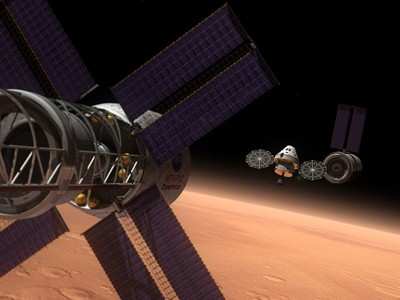
NASA reached an important milestone for the next U.S.
transportation system that will
carry humans into deep space. NASA
Administrator Charles Bolden announced that the system will be
based on designs originally planned for the Orion Crew Exploration
Vehicle. Those plans now will be used to develop a new spacecraft
known as the Multi-Purpose Crew Vehicle (MPCV).
June
After three years in development and one unsuccessful launch
attempt, a rocket built by two Danish inventors made a
successful unmanned test flight. Copenhagen
Suborbitals Group had hoped the rocket would achieve an altitude of
about 9 miles, but it was unclear if that objective was reached.
The launch was made from a launch pad built on a barge off the
island of Bornholm.
Boeing issued
60-day advance layoff notices to approximately
510 employees in its Space Exploration division, resulting
primarily from the planned completion of the Space Shuttle program.
The notices include an estimated 260 employees in Houston, 150 at
Kennedy Space Center, FL, and 100 at the company’s Huntington
Beach, CA, facility.
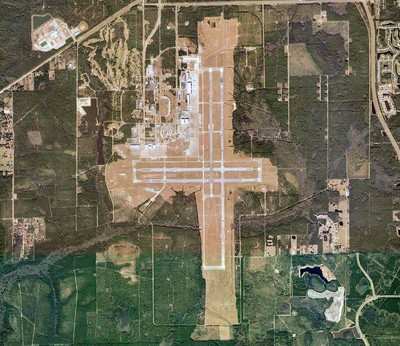
The Jacksonville Aviation Authority (JAA) announced that it had
received support from the State of Florida in its efforts to
transform Cecil Airport into a 21st century commercial
spaceport when Space Florida officially designated
Cecil as a "Space Territory" on June 9. The Space Territory
designation affords a number of opportunities.
Sierra Nevada Corporation (SNC) CEO Fatih Ozmen announced that
Sierra Nevada Space Systems has
completed two significant milestones as part
of the Commercial Crew Development Round 2 (CCDev2) Program. SNC is
building the Dream Chaser, a Space Shuttle-like human spacecraft
for NASA to provide astronaut transport to the International Space
Station (ISS).
July
NASA launched its
final Space Shuttle mission. Atlantis and its
four astronauts left Earth for the final space shuttle mission,
which will cap off an amazing 30-year program of exploration, which
launched great observatories, built an International Space Station,
and taught us more about how humans can live and work in space.
SpaceX CEO and chief rocket designer Elon Musk was joined by
California Lt. Gov. Gavin Newsom, 30th Space Wing Commander Colonel
Richard W. Boltz and Lompoc Mayor John Linn to
break ground on a new launch site for the
Falcon Heavy–Space Launch Complex 4 East at Vandenberg Air
Force Base.
Wrapping up 30 years of unmatched achievements and blazing a
trail for the next era of U.S. human spaceflight, NASA's storied
Space Shuttle Program came to a "wheels stop" at the
conclusion of its 135th mission. Russia said
the end of the U.S. Space Shuttle program marks the beginning of
the
"Era Of Soyuz" for transportation to the
International Space Station.
August
NASA's solar-powered
Juno spacecraft lifted off from Cape Canaveral
Air Force Station in Florida to begin a five-year journey to
Jupiter. Juno's detailed study of the largest planet in our solar
system will help reveal Jupiter's origin and evolution.

When the United States again undertakes manned spaceflight, the
CST-100 spacecraft designed by Boeing will
launch atop a United Launch Alliance (ULA) Atlas V rocket,
according to the company.
House Oversight and Government Reform Committee Chairman Darrell
Issa (R-CA) issued a subpoena to the National Labor Relations Board
(NLRB) and Acting General Counsel Lafe Solomon August 7 as part of
its
investigation into NLRB action against the Boeing
Company.
NASA selected XCOR Aerospace to provide
suborbital flight and payload integration
services for research and scientific missions in a
program that will offer up to $10 million dollars in contracts to
match payload customers with flight vehicle services.
The Russian Progress cargo spacecraft which launched on a
re-supply mission to ISS
failed to separate from its third stage
booster about six minutes into its flight, and
impacted the ground in the Altai Republic in South Siberia. It was
the first reported loss of a Russian Progress freighter.
Following the failure of the Russian Progress resupply mission
to reach orbit, Senator Kay Bailey Hutchison Ranking Member of the
U.S. Senate Commerce, Science and Transportation Committee, and
Senator Richard Shelby renewed their call for a
quick decision and announcement of the design of the next
U.S. human-rated launch vehicle.
September
The FAA granted a Commercial Space Transportation Launch License
to Orbital Sciences Corporation to conduct the Commercial Orbital
Transportation Services (COTS)
program demonstration mission in early
2012.
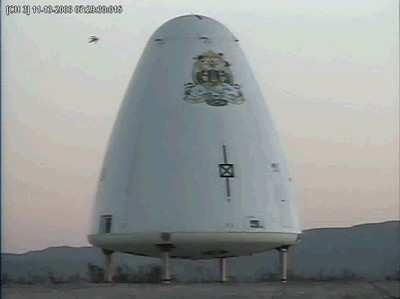
The test of an unmanned spacecraft funded by Internet
billionaire Jeff Bezos ended with the vehicle
being destroyed shortly after launch. U.S.
Government and industry officials said the sub-orbital vertical
launch vehicle being tested by Blue Origin LLC went out of control
at about 45,000 feet and was destroyed as a precaution.
Construction began on the
first new NASA spacecraft built to take humans to
orbit since space shuttle Endeavour left the factory
in 1991, and marked a significant milestone in carrying out the
ambitious exploration vision President Obama and Congress have laid
out for the nation.
The NRC warned that the number of astronauts currently employed
by NASA, 61,
is too low. The number was almost 150 as
recently as 2000.
NASA selected the design of a new Space Launch System that it
says will take the agency's astronauts
farther into space than ever before, create
high-quality jobs here at home, and provide the cornerstone for
America's future human space exploration efforts.
The Senate Appropriations Committee approved a NASA budget that
includes
$500 million for the development of commercial crew
capacity for transporting U.S. and other astronauts to
the ISS. The summary of the appropriation, provided by the
committee, indicates that NASA is funded at $17.9 billion, a
reduction of $509 million or 2.8 percent from the FY2011 enacted
level.
NASA unveiled an outline of its
acquisition strategy to procure transportation services
from private industry to carry U.S. astronauts to low
Earth orbit and the International Space Station. The agency also
announced the addition of optional milestones for the Commercial
Crew Development Round 2 (CCDev2) initiative.
China launched its Tiangong-1 module from the Jiuquan launch
center in the Gobi Desert, the first step in what the government
there
hopes will be a Chinese space station 2020.
The module, whose name translates to "Heavenly Palace," is part of
a program developed to refine spacecraft docking technology.
October
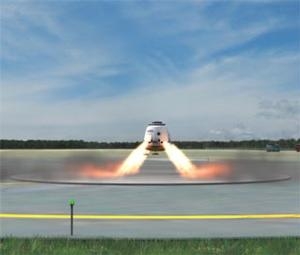
SpaceX Founder Elon Musk outlined a
fully re-usable commercial space system in a
speech that was webcast from the National Press Club in Washington,
DC and archived by C-SPAN.
With two companies planning demonstration flights of commercial
cargo hauling capabilities to ISS, NASA administrator Charles
Bolden said during a roundtable discussion with other space agency
leaders at the annual congress of the International Astronautical
Federation that the first deliveries of supplies by a commercial
carrier
could come within months, rather than
years.
The Space Shuttle Endeavour officially has a new owner. The
title transfer to the California Science
Center was finalized with former NASA astronaut and
STS-134 Commander Mark Kelly, the STS-134 crew, NASA Associate
Deputy Administrator Richard Keegan and California Science Center
President Jeffrey N. Rudolph.
In another sign that NASA will begin to
rely sooner rather than later on commercial
space ventures to complete its missions, the agency has signed a
deal with Virgin Galactic for up to three charter flights on its
privately-built spacecraft to provide opportunities for engineers,
technologists, and scientific researchers to conduct experiments in
suborbital space.
The ‘Virgin Galactic Gateway to Space’ and New
Science and Education Customers to Bring Benefits of Space Access
to Students and Researchers
was dedicated. Some 800 guests joined Sir
Richard Branson and New Mexico Governor Susana Martinez for the
festivities.
Space Exploration Technologies (SpaceX) successfully completed
the
preliminary design review of its revolutionary
launch abort system, a system designed for manned missions using
its Dragon spacecraft. This represents a major step toward creating
an American-made successor to the Space Shuttle.
The
first Soyuz launch vehicle to lift off from Arianespace's
facility in French Guiana successfully placed
Europe’s first two Galileo navigation satellites into
orbit.

NASA's industry partners continued to meet their established
milestones in
developing commercial crew transportation
capabilities that will ferry U.S. astronauts to and
from the International Space Station, reducing the amount of time
America has to depend on Russia for launch services.
Virgin Galactic's chief pilot said that its new timetable for
the first commercial suborbital
flights have been pushed to 2013, and the
operation will ramp up more slowly than originally projected. And,
after an intense selection process with more than 500 applicants
including some of the best pilots in the world, Virgin Galactic
selected former USAF test pilot Keith Colmer as the first astronaut pilot to join the commercial
spaceline's flight team.
An unpiloted ISS Progress 45 cargo craft
launched, successfully, from the Baikonur
Cosmodrome in Kazakhstan. Less than nine minutes
later, the Progress reached its preliminary orbit and deployed its
solar arrays and navigational antennas.
November
Boeing announced plans to
consolidate its Commercial Crew program
office, manufacturing and operations at the Kennedy
Space Center (KSC). Boeing, in partnership with Space Florida, has
an arrangement to use the Orbiter Processing Facility-3 (OPF-3) to
manufacture, assemble, and test the company’s Crew Space
Transportation (CST)-100 spacecraft.
The U.S. House Committee on Science, Space, and Technology held
a hearing to provide aerospace companies and NASA an opportunity to
testify about progress being made toward the
goal of establishing a commercial capability to fly humans to and
from low Earth orbit and the long-term non-Government commercial
market for private launch services.
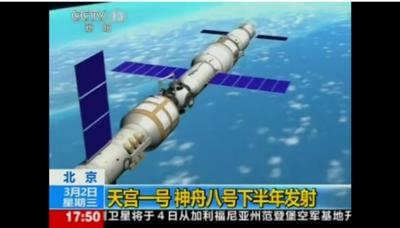
Two Chinese spacecraft successfully docked,
marking China's first step in an ambitious plan to build and man
its own space station by 2020. The Shenzhou VIII spacecraft docked
with the Tiangong-1 module. The Shenzhou spacecraft, which
translates to "Divine Vessel," is a variant of the capsule which
China developed for its nascent manned space program in 2003.
NASA announced plans to
add an unmanned flight test of the Orion spacecraft in
early 2014 to its contract with Lockheed Martin Space
Systems for the multi-purpose crew vehicle's design, development,
test and evaluation. This test supports the new Space Launch System
(SLS) that the administration says will take astronauts farther
into space than ever before, and provide the cornerstone for
America's future human spaceflight efforts.
The Chinese Shenzhou 8 spacecraft, which twice docked
successfully with the Tiangong 1 module launched separately,
returned to Earth. China says it is working
towards building its own space station, after being denied
participation in the ISS program.
NASA and the Intrepid Sea, Air & Space Museum announced the
official transfer of title of Space Shuttle Orbiter
Enterprise from NASA to the museum in New York
City.
NASA began a
historic voyage to Mars with the launch of the
Mars Science Laboratory (MSL), which carries a car-sized rover
named Curiosity, from Cape Canaveral Air Force Station aboard an
Atlas V rocket.
December

Entrepreneur and philanthropist Paul G. Allen announced that he
and aerospace pioneer Burt Rutan have reunited to develop the next generation of space
travel. Allen and Rutan are developing a revolutionary
approach to space transportation: an air-launch system to provide
orbital access to space with greater safety, cost-effectiveness and
flexibility.
NASA officially confirmed that SpaceX will be allowed to
complete the objectives of COTS 2 and COTS 3
in a single mission. This means Dragon will
perform all of the COTS 2 mission objectives which include numerous
operations in the vicinity of the ISS, and will then perform the
COTS 3 objectives. These include approach, berthing with the ISS,
astronauts opening Dragon and unloading cargo, and finally,
astronauts closing the spacecraft and sending it back to Earth for
recovery from the Pacific Ocean off the coast of California.
NASA announced a modified competitive procurement strategy to
keep on track the agency’s plan to have
U.S. companies transport American astronauts
into space. Instead of awarding contracts for the next phase of the
Commercial Crew Program, the agency plans to use multiple,
competitively awarded Space Act Agreements.
A Soyuz 2 launch vehicle failed to place a communications
satellite in orbit, the
second unmanned launch vehicle failure for the
Russians in five months.
 ANN's Daily Aero-Linx (04.16.24)
ANN's Daily Aero-Linx (04.16.24) Aero-News: Quote of the Day (04.16.24)
Aero-News: Quote of the Day (04.16.24) Airborne 04.10.24: SnF24!, A50 Heritage Reveal, HeliCycle!, Montaer MC-01
Airborne 04.10.24: SnF24!, A50 Heritage Reveal, HeliCycle!, Montaer MC-01 Airborne 04.12.24: SnF24!, G100UL Is Here, Holy Micro, Plane Tags
Airborne 04.12.24: SnF24!, G100UL Is Here, Holy Micro, Plane Tags Airborne-Flight Training 04.17.24: Feds Need Controllers, Spirit Delay, Redbird
Airborne-Flight Training 04.17.24: Feds Need Controllers, Spirit Delay, Redbird
















